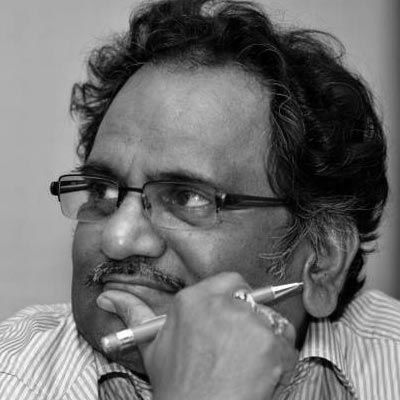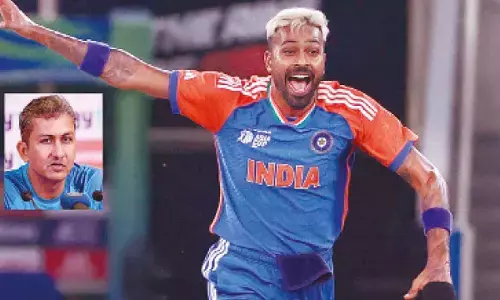Bringing media under the control of Babus

Bringing media under the control of Babus
The Information Technology Act, Section 79 provided that the intermediaries are not liable for the content generated by users. The text is, "an intermediary shall not be liable for any third-party information, data, or communication link made available or hosted by him." This immunity is made subject to adherence of rules made by the Government.
Using this authority, the Government came up with this regulation that almost empties the immunity. The Information Technology (Intermediary Guidelines and Digital Media Ethics Code) Rules 2021 are basically "Intermediary Rules", it replaced the earlier Information Technology (Intermediaries guidelines) Rules, 2011.
Most troubled questions raised before Supreme Court and Parliament were how to prevent barrage of fake news and flooding of pornographic content. Entertainment programmes, serials and cinema are now the important components of OTT platforms and a controversy over Tandav serial, raked up by complaint of some BJP leaders as hurting religious sentiments was another provocation for regulation.
There were 2011 guidelines for intermediary liability under IT Act, which was felt insufficient as the Government found phenomenal increase in social media apps and wide-spread use of OTT during the Corona pandemic when theatres were totally closed. More than anything else the content critical of the government was growing on various social media platforms.
The BJP came to power on the strength of the social media propaganda, but now every political party is using the technology to expose the deficiency in administration, affecting its image.
Three- tier regulation
Minister called it 'soft touch regulation' but criticised as wolf in watchdog clothing. Over The Top video streaming platforms are now under three-tier regulation. First tier is self-regulation by the platform. The second tier involves a body of content publishers evolving 'regulation' headed by retired Judge of high Court or Supreme Court.
The judge will have to be appointed from a panel prepared by the ministry, and have up to six other members, who can be experts from the field of media, broadcasting, technology, and entertainment.
And the third is under the name of 'oversight', the Ministers, their Inter-Departmental Committee with secretaries take overall control on the entire media without exception including the print media being controlled through their digital versions.
Controlling the comments
On complaints, the government gets power to examine the content of digital media. If a critical comment not palatable to central government appears in newspaper, which they think not ethically correct, the Secretary or Minister can complain to Press Council of India, which is a statute based, independent 'self-regulatory' body to uphold professional standards.
In case Press Council after conducting a hearing finds that newspaper has not breached any ethical norm, there should end the matter. But there is another route made available now.
As the digital platform that newspaper i.e., website contains the same clip either in text, audio or video form, the Secretary or Minister may complain to Level one internal grievance committee of digital news and current affairs platform of that newspaper, then escalates to Level two where a retired judge heading the redressal committee of behalf of association of Digital Newspapers, as per the 2021 Rules reviews the earlier decision (of Level 1).
Suppose the Level II also rejects it as a baseless complaint, he can go to Level III, i.e., Inter-Departmental Committee, where himself, Secretary of Information & Broad Casting Ministry is the head of five secretaries. One can imagine the decision of this committee.
It can admonish, or censure or take any other measure that could be taken as per the Code under Cable TV Network Act, etc.
Camouflaged behind the verbose, the Information Technology (Intermediary Guidelines and Digital Media Ethics Code) Rules 2021, basically "Intermediary Rules", give all the power over digital news media and other new media platforms to the central government.
The Union is usurping through the inter-departmental Committee which was made the final authority to sit in appeal over the 'self' regulatory decisions. Three tier grievance redressal mechanism stipulated by these Rules ends up with the apex review power in the hands of Secretaries of five central ministries headed by the Secretary of Ministry of Information and Broadcasting. Thus, the babus of Union will 'regulate the social media now and it is called 'self-regulation'.
This cleverly designed regulatory cover, control and compel every publisher of news and current affairs on digital platforms and the video streaming services to depend on or fear the Secretaries of the Ministries. These officers are empowered to receive and deal with ethical issues and compliance of code, which includes "Norms of journalistic conduct" developed by Press Council.
It is also mandated that 'content which is prohibited under any law for the time being in force shall not be published or transmitted'. The Committee was given extra ordinary powers to summon media persons, to admonish, censure and direct the to remove or block the content.
The Centre has, not indirectly, but directly brought news media on digital platform under its control. It says that the newspapers and their e-papers are exempted but their content in non-e-paper form makes them publisher of digital media of news and current affairs.
As every print and tv news organization has a digital version, thus these guidelines will subject them to new governmental regulation additionally.
Three tier-mechanism is jugglery of words. At first level it should be 'self-regulation' but it is not voluntary but made mandatory. And from the grievance redressal decision at this level could be escalated to the level two, in the form of appeal.
The "self-regulating" body at level 2 is to be an independent body constituted by publishers or their associations and headed by a retired judge of the Supreme Court or a High Court, or an independent eminent person from media, broadcasting, entertainment, child rights, human rights, or other relevant fields.
This body must be registered with the MI&B, and the MI&B will "satisfy itself" that the self-regulating body has been constituted properly. It is linked with the mandatory registration of that body.
The words 'to satisfy' MI&B is where the entire power lies. This self-regulating body, which comes into existence will have powers to warn/censure/admonish/reprimand the publisher, require an apology, reclassify ratings, or even censor the content as it deems fit.
The crux of control lies in level 3, where the complaints from first and second level can be taken to the Inter-Departmental Committee of seven ministries represented by their officers and headed by Joint Secretary of MI&B as per Rule 13(2). Through this joint secretary, the Ministry will control all kinds of media.
This Committee is empowered to delete or modify content for preventing incitement to the commission of a cognisable offence relating to public order. [Rule 14(5)]. It is a mischievous name of oversight. The Internet Freedom Foundation (IFF), a digital liberties organisation, criticised that this as "excessive governmental control over digital news and OTT content".
Obligation to assist investigation
They impose an obligation on social media and all other platforms to assist investigative agencies. Now the Google, Facebook, Twitter etc should appoint officers to deal with grievances and compliance of rules, who will be designated as 'liable' officer for legal requirements.
They should also appoint a nodal- contract person for coordination with law enforcement agencies for 24x7 hours. Besides, the Programme Code under the Cable Television Networks (Regulation) Act, 1995 is also mandatory.
Restrictions on viewership
These guidelines also require streaming services to classify content based on its nature and type. For example, the content "for persons aged 16 years and above and can be viewed by a person under the age of 16 years with parental guidance shall be classified as U/A 16+ etc.
Thus, the platform owners will have to classify their content according to different age groups: "U" or universal rating, and others for 7+, 13+, 16+ and then 18+ age.
(The writer is Professor of Law, Bennett University and former Central Information Commissioner)


















